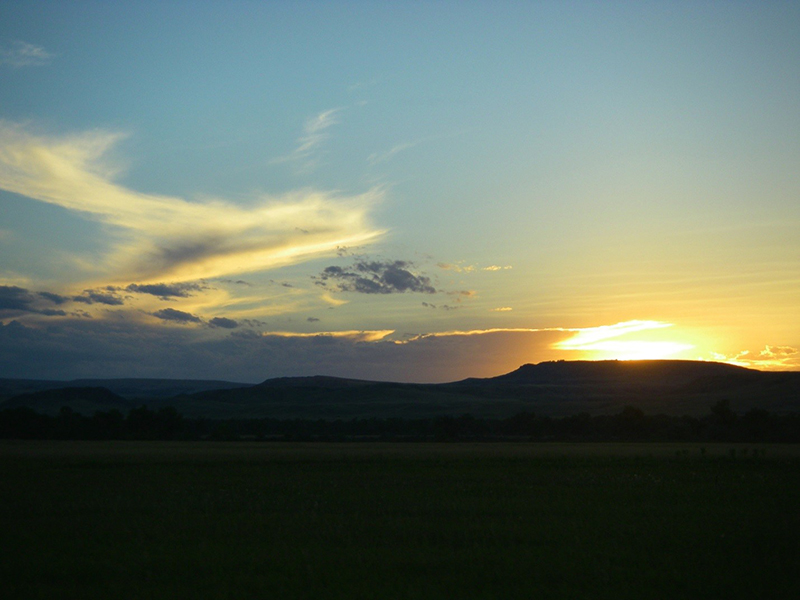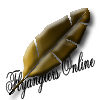
'The Fraternity of Fly Fishers'
September 08, 2014

"Happiness is subjective, contentment is a choice." Anonymous

The end of a perfect day on the Bighorn River – N. Travis image
![]() How many times have you decided to take a solitary fishing trip somewhere up on a mountain stream that has few other visitors? If the answer is many times then we are in the same boat when it comes to desiring a little occasional alone time out and about.
How many times have you decided to take a solitary fishing trip somewhere up on a mountain stream that has few other visitors? If the answer is many times then we are in the same boat when it comes to desiring a little occasional alone time out and about.
I packed light for this excursion, as the estimated time for the trip would be no longer then let us say eight hours or thereabouts. I just needed my wading boots for this trip, as the stream in question is not more then maybe fifteen feet across on the average. In addition, it is no deeper than a couple of feet except for some of the nicer pools and runs. I decided that nothing more except one of my lightweight trout shirts and pants were required for this day trip
 Atlantic Tarpon [Megalops atlanticus] can grow to over eight feet in length and weigh over three hundred and fifty pounds, the males can live up to 35 years and the females can live to an age of 50 years. The tarpon are one of the most sought after fish is the southern coastal waters.
Atlantic Tarpon [Megalops atlanticus] can grow to over eight feet in length and weigh over three hundred and fifty pounds, the males can live up to 35 years and the females can live to an age of 50 years. The tarpon are one of the most sought after fish is the southern coastal waters.
The Silver King got its name from its brilliant silver color, spectacular aerial leaps and hard fight they are classed as a mid-water predator mostly feeding on mullet, pinfish, ladyfish, marine catfish, Atlantic needle fish, sardines, shrimp and crab. They will feed both during the hours of daylight and darkness and the sallow their prey whole. Even though I have listed several of the tarpon's favorite meals I will tell you that they are opportunistic feeder and will feed on a great many marine minnows and small fish given the chance and will take flies off the surface.
 First of all there are many good days when anglers encounter apparent Green Drake hatches and trout rising for them accordingly. Streams in northeast side of Yellowstone National Park such as Lamar River, Soda Butte Creek, and Slough Creek are famous for these hatches. So if you hit one of good days filled with hatches and rises you are in fisherman's paradise. But then again, it's interesting to note how trout behave before the hatch and even when the hatch is sparse to none. It's the same scenarios as discussed in the previous chapter about the Gallatin River but I never believe it's redundant. Indeed, it's important to know if one wants to fish this breathtaking setting at least once and catch native Yellowstone Cutthroat.
First of all there are many good days when anglers encounter apparent Green Drake hatches and trout rising for them accordingly. Streams in northeast side of Yellowstone National Park such as Lamar River, Soda Butte Creek, and Slough Creek are famous for these hatches. So if you hit one of good days filled with hatches and rises you are in fisherman's paradise. But then again, it's interesting to note how trout behave before the hatch and even when the hatch is sparse to none. It's the same scenarios as discussed in the previous chapter about the Gallatin River but I never believe it's redundant. Indeed, it's important to know if one wants to fish this breathtaking setting at least once and catch native Yellowstone Cutthroat.
 Summer heat, deer hair and lily pads share one thing in common - Bugs. Deer hair ones, built for the jaws of hungry bass and the trials of being ripped through a lily pad jungle. They range from spectacular works of art in sizes built to entice ten pound bass and pike into a feeding frenzy; to plain colored variations tied small enough to bring a decent sized bluegill to the top. They are the soup-de-jour of summer. I have an affinity for them and have since a very young age. At 10 years of age my first fly rod came along with a handful of wet flies.
Summer heat, deer hair and lily pads share one thing in common - Bugs. Deer hair ones, built for the jaws of hungry bass and the trials of being ripped through a lily pad jungle. They range from spectacular works of art in sizes built to entice ten pound bass and pike into a feeding frenzy; to plain colored variations tied small enough to bring a decent sized bluegill to the top. They are the soup-de-jour of summer. I have an affinity for them and have since a very young age. At 10 years of age my first fly rod came along with a handful of wet flies.
 I took time to go out to a pond. We had just had another gully washer rain storm so I would have to walk. So grabbed a couple of rods and headed out to a pond. When I arrived at the pond and I headed to the furthest spot from where I parked. That way, as I fish I was getting closer to the truck. I had a black fantailed mohair leech and a Goldie Jr on the two rods. This is a good place to start and I cast the mohair fly first.
I took time to go out to a pond. We had just had another gully washer rain storm so I would have to walk. So grabbed a couple of rods and headed out to a pond. When I arrived at the pond and I headed to the furthest spot from where I parked. That way, as I fish I was getting closer to the truck. I had a black fantailed mohair leech and a Goldie Jr on the two rods. This is a good place to start and I cast the mohair fly first.
 When I was a kid we would occasionally have fish for dinner. When I questioned how to eat fish I was told that "You eat the meat and spit out the bones." Good advice for eating fish and many other things in life as well.
When I was a kid we would occasionally have fish for dinner. When I questioned how to eat fish I was told that "You eat the meat and spit out the bones." Good advice for eating fish and many other things in life as well.
In my early days of fly fishing I was privileged to make the acquaintance of Vince Marinaro and to spend time fishing with him when he came to fish the Au Sable River in Michigan where I was living at the time. After I moved from Michigan to Montana we maintained our relationship through letters and cassette tapes. Those letters and tapes are some of my most treasured earthly possessions. Vince was one of the luminaries of modern fly fishing and his first book, A Modern Dry Fly Code, was just being rediscovered by the fly fishing public about the time that I first met him. That book presented many ground breaking ideas from the jassid to the crisscross hackled dry fly.
 Endless color and size variations of the traditional hackled style have been tied. You should start with a few that cover the repeated color themes of natural mayflies. Don't hesitate, however, to tie others if you find yourself fishing over hatches that fall outside the most common color spectrum.
Endless color and size variations of the traditional hackled style have been tied. You should start with a few that cover the repeated color themes of natural mayflies. Don't hesitate, however, to tie others if you find yourself fishing over hatches that fall outside the most common color spectrum.
 With the publication of this issue of FAOL we mark the beginning of our 17th year on the Internet.
With the publication of this issue of FAOL we mark the beginning of our 17th year on the Internet.
Much has changed in the intervening years since the Ladyfisher put together that first issue and posted it online. At that time the worldwide web was a new thing and the idea that anyone would support or even read an online magazine was highly speculative.
[ HOME ]
[ Search ] [ Contact FAOL ] [ Media Kit ]